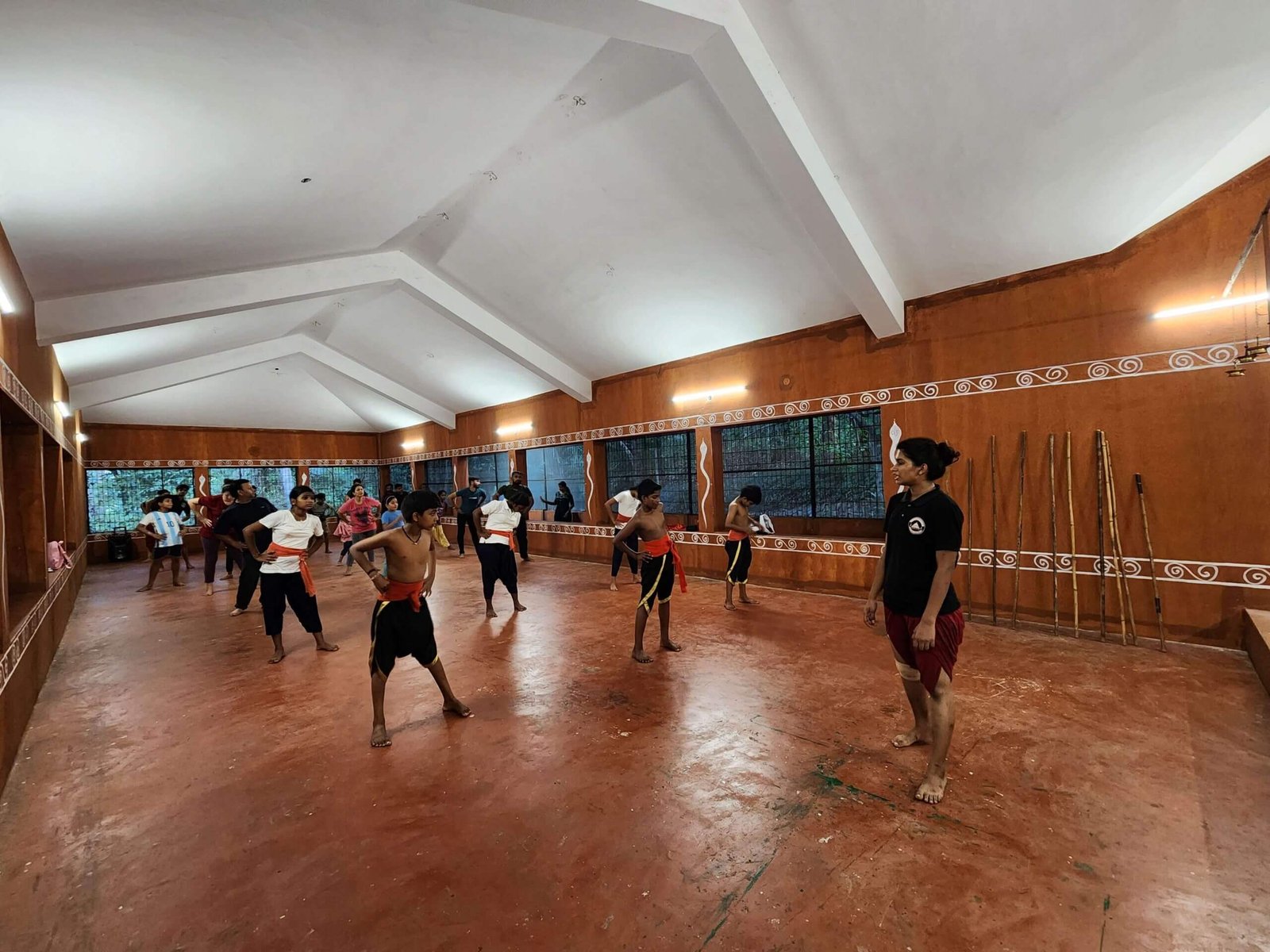Kalaripayattu, often hailed as the mother of all martial arts, is an ancient Indian martial art form that originated in Kerala. It is not merely a physical practice but also encompasses various aspects of mental discipline and spiritual growth. Over the centuries, Kalaripayattu has evolved into distinct regional styles, each with its own techniques, philosophies, and cultural influences. In this blog post, we delve into four prominent types of Kalaripayattu: Vadakkan, Thekkan, Madhya Kerala and Kadathanadan.
Vadakkan (Northern Style)
Vadakkan Kalaripayattu, also known as the Northern Style, primarily hails from the northern regions of Kerala. It is characterized by its emphasis on powerful strikes, dynamic footwork, and acrobatic movements. This style is often associated with larger body movements and utilizes a wide range of weapons such as swords, spears, and shields. Vadakkan practitioners focus on building strength, agility, and precision in their techniques. The training regimen includes rigorous physical conditioning, sparring drills, and weapon mastery.
Thekkan (Southern Style)
Thekkan Kalaripayattu, or the Southern Style, originates from the southern part of Kerala. It is renowned for its fluidity, grace, and intricate movements. Unlike the Vadakkan style, Thekkan Kalaripayattu emphasizes flexibility, evasion, and subtle techniques. Practitioners of this style often incorporate elaborate choreography and rhythmic patterns into their training, making it both a martial art and a performing art. Thekkan Kalaripayattu places a strong emphasis on internal energy cultivation, breath control, and meditation alongside physical training.
Madhya Kerala (Central Kerala Style)
Madhya Kerala Kalaripayattu, also known as the Central Kerala Style, is a blend of both Vadakkan and Thekkan traditions. It emerged from the central regions of Kerala and integrates elements from both northern and southern styles. This hybrid approach offers practitioners a comprehensive understanding of Kalaripayattu techniques, encompassing both power and finesse. Madhya Kerala practitioners focus on balance, adaptability, and versatility in combat situations. Training in this style involves a balanced combination of strength training, flexibility exercises, and weapon practice.
Kadathanadan
Kadathanadan Kalaripayattu is believed to have originated from the forest regions of Kerala, where warriors honed their skills amidst the rugged terrain and dense foliage. This style is characterized by its emphasis on agility, stealth, and improvisation. Kadathanadan practitioners are adept at using their surroundings to their advantage, employing natural objects as weapons and adapting to unpredictable combat scenarios. The training regimen includes outdoor exercises, survival skills, and specialized techniques for close-quarter combat. Kadathanadan Kalaripayattu embodies the spirit of adaptability and resilience fostered by its origins in the wilderness.
Conclusion
The diverse types of Kalaripayattu – Vadakkan, Thekkan, Madhya Kerala, and Kadathanadan – offer a glimpse into the rich tapestry of martial traditions found in Kerala, India. Each style reflects the unique cultural heritage, geographical influences, and philosophical underpinnings of its respective region. Whether it’s the powerful strikes of Vadakkan, the fluid movements of Thekkan, the hybrid approach of Madhya Kerala, or the adaptive strategies of Kadathanadan, Kalaripayattu continues to captivate practitioners and enthusiasts worldwide with its timeless legacy of combat excellence and spiritual growth.
FAQs
Q: Are there any other regional variations of Kalaripayattu?
A: Yes, apart from the major styles, there are various regional variations of Kalaripayattu practiced across different parts of Kerala, each with its unique techniques and training methods.
Q: What weapons are commonly used in Kalaripayattu?
A: Some of the traditional weapons used in Kalaripayattu include the sword (kadthi), shield (paricha), staff (kettukari), spear (kuntham), flexible sword (urumi) and dagger (katar).
Q: Is Kalaripayattu purely a martial art, or does it have other aspects?
A: Kalaripayattu is not just a martial art; it is also a holistic system that encompasses physical training, self-defense, healing practices (such as massage and herbal treatments), and spiritual development.
Q: Are there competitions for Kalaripayattu?
A: While Kalaripayattu is primarily taught as a traditional art form and self-defense system, there are some organized competitions and demonstrations held locally and internationally to showcase practitioners’ skills.
Q: Can anyone learn Kalaripayattu?
A: Yes, anyone with dedication and willingness to learn can practice Kalaripayattu. It is open to people of all ages and fitness levels, although beginners may need to start with basic conditioning and gradually progress to more advanced techniques.





